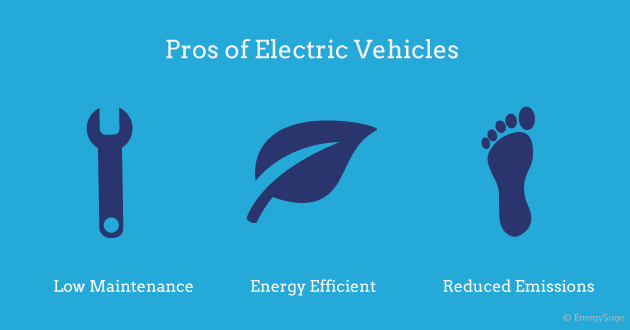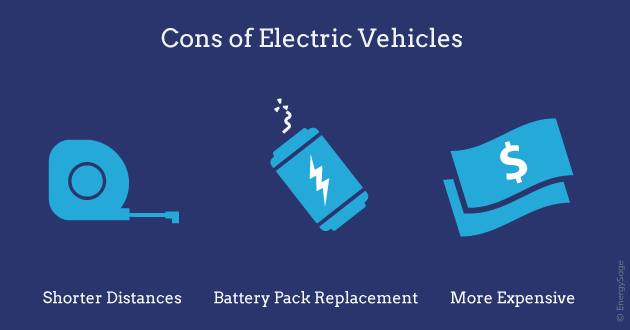Buying a new car is a big decision and with increasingly more people opting for some form of Electric Vehicle now is no better time to explore the world of Electric Vehicles (EV) and EV charging.
The UK knows that range extended electric vehicles, plug-in hybrids, and fully electric vehicles are among the cleanest vehicles on the market and will bring about significant environmental benefits.
The UK wants to be at the forefront of the design and manufacturing of zero-emission vehicles, and for all of its new vehicles to be effectively zero-emission by 2040. The government detailed in its NO2 plan that it hopes to end the sale of new fossil fuel powered cars and vans by 2040. It also hopes that by 2050 every car and van will produce zero emissions.
The popularity of electric cars in the UK has shot up over the last few years, with more than 220,000 plug-in vehicles on the road in 2019, compared with just 3,500 in 2013.(nextgreencar.com) This huge increase in electric car sales has come about because of a greater level of choice for drivers, a shift in the public’s attitude towards electric cars and a constantly improving public recharging network. Combined, this means that UK electric car buyers have a greater selection of vehicles to choose from than ever before.
The future is bright too with a number of plug-in cars set to be launched within the next year or so and, with the UK government’s Plug-in Car Grant now guaranteed until 2020, an electric car is now a viable option for a large number of motorists.
Often the trickiest part for new EV owners to wrap their heads around is when it come to actually charging their new vehicle. So let’s delve into the nuts and bolts of this new technology.
EV charging is an important aspect of EV ownership. With power rating, connector type, cabling requirements and vehicle specification to consider.

EV Charging Explained
There are three main types of EV charging – rapid, fast, and slow. These represent the power outputs, and therefore charging speeds, available to charge an EV. Note that power is measured in kilowatts (kW).
Rapid chargers are one of two types – AC or DC [Alternating or Direct Current]. Current Rapid AC chargers are rated at 43 kW, while most Rapid DC units are at least 50 kW. Both will charge the majority of EVs to 80% in around 30-60 minutes (depending a battery capacity).
Fast chargers include those which provide power from 7 kW to 22 kW, which typically fully charge an EV in 3-4 hours. Common fast connectors are a tethered Type 1 or a Type 2 socket (via a connector cable supplied with the vehicle).
Slow units (up to 3 kW) are best used for overnight charging and usually take between 6 and 12 hours for a pure-EV, or 2-4 hours for a Plug – in Hybrid (PHEV). EVs charge on slow devices using a cable which connects the vehicle to a 3-pin (standard UK plug) or Type 2 socket.

Charging on Public Networks
The UK has a large number of public EV charging networks, with some offering national coverage and others only found in a specific region. The major UK-wide networks include BP Chargemaster (Polar), Ecotricity, Pod Point and Charge Your Car.
Regional networks usually cover well defined areas such as the Midlands or the South West. Since a number of these are operated by or have links with national networks, it is often possible to use the points within these regional networks with a national account. However, the level of access depends on the network and specific charge point.
Payment and access methods across networks vary widely, with some networks providing an RFID card and others a smartphone app to use their services. While most require an account to be set up before use, some rapid units with contactless PAYG card readers are starting to be installed.
Although many EV charge points are free to use, the majority of fast and rapid chargers require payment. Charging tariffs tend to comprise a flat connection fee, a cost per charging time (pence per hour) and/or a cost per energy consumed (pence per kWh).

How to Charge an EV at Home
Charging at home is often the most convenient and cost effective way to recharge an EV. Government grants are available for the installation of home EV charge points, and a large number of companies including Quinns, offer the service of fully installing a charge point at your property.
Most home chargers are either rated at 3 kW or 7 kW. The higher powered wall-mounted units normally cost more than the slower 3 kW option, and halve the time required to fully charge an EV. Many plug-in car manufacturers have deals or partnerships with charge point suppliers, and in some cases provide a free home charge point as part of a new car purchase.
In most cases, home-based charging requires off-street parking to avoid trailing cables across public footpaths and public areas. All EV charging units are wired directly to the central metering unit, usually on its own circuit for safety and to enable monitoring separate from other electrical loads. While less common, on-street residential charging units are becoming available in some local authority areas.

How to Charge an EV at Work
An increasing number of companies are installing workplace EV charging units for use by employees and visitors. This is an area Quinns as a business is looking to grow and as with home-based charging, plugging-in an EV at the workplace charging makes sense as an employee vehicle will typically be stationary for most of the day when it can be conveniently charged. Work-based chargers can also play a role in attracting customers to visit a commercial or retail site.
While workplace charge points are similar to home-based units, power-ratings tend to be higher with more 7 kW and 22 kW units installed. More business units are double socket allowing them to charge two cars at the same time. The higher power units also enable plug-in company fleets to ‘opportunity’ charge in the middle of the day to increase the effective number of business miles driven per day without having to use more expensive charging on the public rapid network.
Company benefits in the form of grants and enhanced capital allowances are available for workplace charging units. Company owners can decide whether to provide free charging or top charge a fee to use the facilities, many opting for zero or low cost to incentive EV usage within the company and by customers and visitors.

Charging Your Electric Car
A key issue when choosing which EV to buy or use is the type of charging inlets on the vehicle. For full EVs, car manufacturers tend to favour one of three charging inlet options: (1) Type 2 and CCS, an option offered by most of the European car makers who include a Type 2 for slow/fast charging, and a Type 2 Combo (also known as ‘CCS’) for rapid charging; (2) Type 1 and CHAdeMO, for slow/fast and rapid charging respectively; and (3) Tesla Type 2 which can be found on all current EU Tesla models.
To complicate matters, different EV models can charge at different slow and rapid speeds depending on what on-board charger has been fitted, with some plug-in hybrids unable to rapid charge. Battery capacities also have a significant influence on charging speeds, the larger EV batteries more likely to require rapid charging.

Pros and Cons of All-electric Vehicles
Pro: Electric cars are energy efficient
Energy efficiency refers to the amount of energy from the fuel source that is converted into actual energy for powering the wheels of a vehicle. EVs are far more efficient than conventional gas-powered vehicles: EV batteries convert 59 to 62 percent of energy into vehicle movement while gas powered vehicles only convert between 17 and 21 percent. This means that charging an EV’s battery puts more towards actually powering the vehicle than filling up at a gas pump.
Pro: Electric cars reduce emissions
Emission reduction, including reduced usage of fuel, is another pro for all-electric vehicles. Because they rely on a rechargeable battery, driving an electric car does not create any tailpipe emissions which are a major source of pollution in the United States. In addition, the rechargeable battery means much less money spent on fuel, which means all energy can be sourced domestically (and often through renewable resources such as solar panel systems).
Improving battery technology in today’s light-duty EVs means they can drive 100 miles while consuming only 25 to 40 kilowatt-hours (kWh) of electricity. At current prices, it costs around £2.50 to recharge a car like the Nissan Leaf to travel about 100 miles – around 2.5p per mile. The cost per mile of travelling in the Volkswagen Golf 1.6 TDI, based on its official combined fuel consumption of 68.9mpg and a fuel cost of £1.40 per litre, is around 9p – more than three times higher than the Leaf.
Pro: Electric cars are high performance and low maintenance
Electric vehicles are also high performance vehicles whose motors are not only quiet and smooth but require less maintenance than internal combustion engines. The driving experience can also be fun because EV motors react quickly, making them responsive with good torque. EVs are overall newer than their gas powered counterparts and are often more digitally connected with charging stations providing the option to control charging from an app.

Con: Electric cars can travel less distance
AEVs on average have a shorter range than gas-powered cars. Most models ranging between 60 and 120 miles per charge and some luxury models reaching ranges of 300 miles per charge. For comparison, gas powered vehicles will average around 300 miles on a full tank of gas, and more fuel-efficient vehicles getting much higher driving ranges. This may be an issue when looking at AEVs if you frequently take long trips. Availability of charging stations can make AEVs less suitable for activities like road trips.
Con: Electric cars take longer to “refuel”
Fuelling an all-electric car can also be an issue. Fully recharging the battery pack with a Level 1 or Level 2 charger can take up to 8 hours, and even fast charging stations take 30 minutes to charge to 80 percent capacity. Electric car drivers have to plan more carefully, because running out of power can’t be solved by a quick stop at the gas pump.
Con: Electric cars are more expensive, and battery packs may need to be replaced
The battery packs within an electric car are expensive and may need to be replaced more than once over the lifetime of the car. All-electric vehicles are also more expensive than gas-powered cars, and the upfront cost of all-electric vehicle can also be prohibitive. However, the fuel cost savings, tax credits, and state incentives can help to offset this cost overall if they are available.
Overall, all-electric vehicles, like any vehicle, must be assessed based on personal needs and vehicle usage. There are many pros to owning an electric vehicle, such as fuel savings and reduced emissions, but this can come at the cost of relying on battery charging and higher costs. Consider what works best for you when looking into purchasing an all-electric vehicle.
Pros and Cons of Plug-in Hybrid Electric Vehicles
Many of the same benefits of all-electric cars also apply to plug-in hybrid electric vehicles. PHEVs are great vehicles for reducing emissions and reducing fuel usage. For short trips, your PHEV may not need to switch away from its all electric motor, in which case the car emits no tailpipe emissions. Even more, PHEVs use 30 to 60 percent less fuel than conventional gas-powered cars. If the electricity is sourced from renewable resources, the amount of greenhouse gas emissions can be reduced even further.
PHEVs also make great vehicles for those who cannot commit to a fully electric vehicle because of driving and recharging needs. While AEVs are limited to their battery range, the fuel backup in a plug-in hybrid means that when the battery runs out the vehicle can continue to run and even recharge the battery by using fuel. PHEVs usually have a better fuel economy than their conventional gas-powered counterparts.
Much like an EV, one of the hurdles to owning a PHEV is the amount of time it takes to recharge the battery. While PHEV batteries are smaller on average than those found in EVs, a Level 1 charger may still take several hours to charge. A Level 2 charger can take one to four hours. In addition, while fast charging does exist most PHEVs do not have this charging capability.
Another factor to consider is cost: like EVs, PHEVs have a higher price tag than many gas-powered vehicles. There are fuel savings, tax credits, and government incentives that can help offset these costs, and as production of PHEVs expands, these prices may come down.
Consider all the pros and cons of electric cars when you make a purchase
All-electric cars and plug-in electric cars are great for drivers who want to reduce emissions, reduce fuel costs, and drive nice vehicles. However, battery charging can take a long time which may not fit driving needs and the upfront costs mean that the vehicles are a larger investment. It is ultimately up to the driver to decide if this kind of vehicle is the right fit and if so, taking steps even further to reduce emissions by integrating solar panel systems into their vehicle charging.
All in all, EV seem to be the future and before long we may all need to take the leap and go electric.







2024 Year in Review
Mid-Year Milestones: Expansion, Innovation and Sustainability
Electric Heating vs. Conventional Wet System Heating: What’s Best for Your Home This Winter?